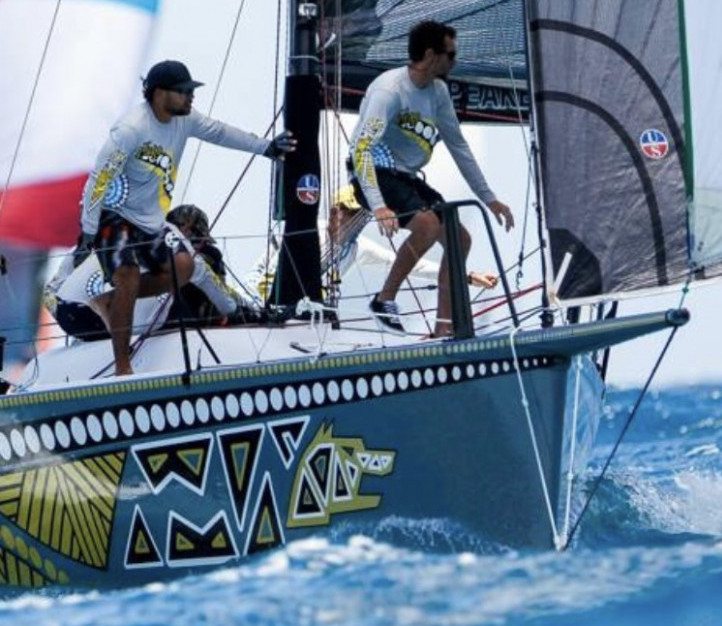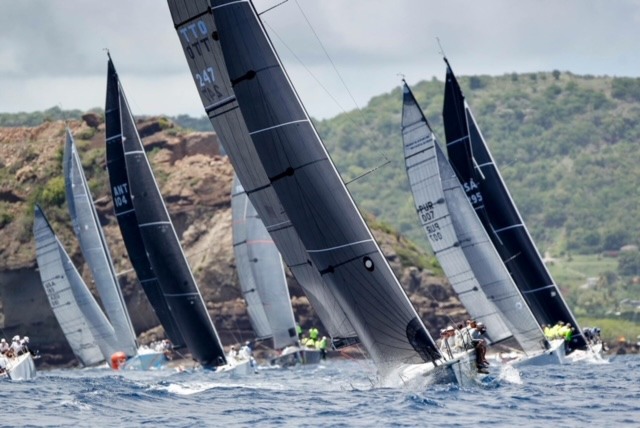This is the time of year when many are preparing their boats for the Caribbean regatta season. Racing starts there in the Northern Hemisphere winter and ends at the start of the hurricane season. Generally from January to June. The locally based boats are well-prepared and know what to expect. Here are some tips for the foreign entrants that may be planning to make the journey, or for whom it may be their first time in the Caribbean.

Rating System and Measurement
The regattas in the Caribbean are run using the Caribbean Sailing Association (CSA) Rating Rule. This is the local measurement and handicapping rule used in all the regattas and is particular to the Caribbean region. What this means is that your boat will have to be measured in order to calculate your handicap or rating. These measurements can be done in some of the islands’ and needs to be scheduled with the available measurers.
The measurement process, especially for racing boats, can be fairly involved so adequate planning is needed here. There are some steps that you can take in advance that can help shorten or ease up the process. You can have your sail makers provide the measurements of your sails to you on their company letterhead. This would save the time and effort of physically measuring each sail in the Caribbean. It’s also a good idea to have the measurement certificates available from whichever rule you race under. These could sometimes be an aid to the measurers.
Spares and Equipment
Even though its gotten better in recent years, the availability and selection of spare parts in the Caribbean is limited and varies from island to island. Most boats would have a store of spare parts but this would need upgrading when going to the Caribbean. Two things to consider carrying on the boat would be a spare spinnaker pole and spare battens. These are not easy to get in the Caribbean and are difficult and expensive to get there if you need to replace them.
A good piece of kit to get would be a canvas dock box to store all your spare kit on the dock when racing. You can get your sailmaker to make one for you to take with you. Just bear in mind that it should not be too wide as it may block traffic on the docks (which aren’t very wide in most islands’).
You should also send a dehumidifier with the boat. The high heat and humidity inside the boat between regattas is not good for laminate sails or electronics. Additionally, some shade cloth awnings or a boom tent would be well worth the investment. These would keep the tropical sun off the decks and help with the interior conditions. Would even help the dehumidifier to work more efficiently. Mold and mildew are constant problems in the tropics.
Different islands’ electricity supply could be either 50hz or 60hz. It is always good to have a good voltage converter transformer as well as outlet plug adapters. Then you can safely use your tools and equipment no matter which island and system you are in. Especially if leaving your boat with a dehumidifier running for an extended period.
One Final Tip
Over the last few years there has been an increase in Sargassum weed in Caribbean waters. Most of us thought that it was a one off event. It seems however that this may become the norm for many regattas.
I remember in Antigua Sail Week in 2018 it was particularly bad. You could see the speed drop as the race went on. No one was prepared and boats were even backing down during a race to clear their foils. Many techniques were tried, including a “keel haul” rope (pictured below), with varying levels of success. On the lay day we even epoxied a box cutter blade to the forward edge of our keel at the hull in an attempt to solve the problem.
The addition of a proper kelp cutter and observation ports to clean and spy the foils would be a great advantage! You may want to consider making these upgrades before sending your boat down. Just saying…

Conclusion
These are just some of the tips off the top of my head. Also, when racing in a new rating system it’s always good to try to learn as much about the rule as possible. It is always possible to optimize your boat to suit the different handicap systems. For starters check out the Caribbean Sailing Association website. You can also speak to other sailors that have had the experience of racing in the Caribbean, and get their insights.
No matter what, racing in the Caribbean is an experience not to be missed, no matter the level of your preparation. But one thing I’ve always noticed is that the better prepared boats and sailors are always the luckiest on the race course.
Bear in mind that some of the links on this website are affiliate links. If you go through them to make a purchase we will earn a commission at no extra cost to you but helps support our website. Keep in mind that we link these companies and their products because of their quality and not because of the commission we receive from your purchases.

